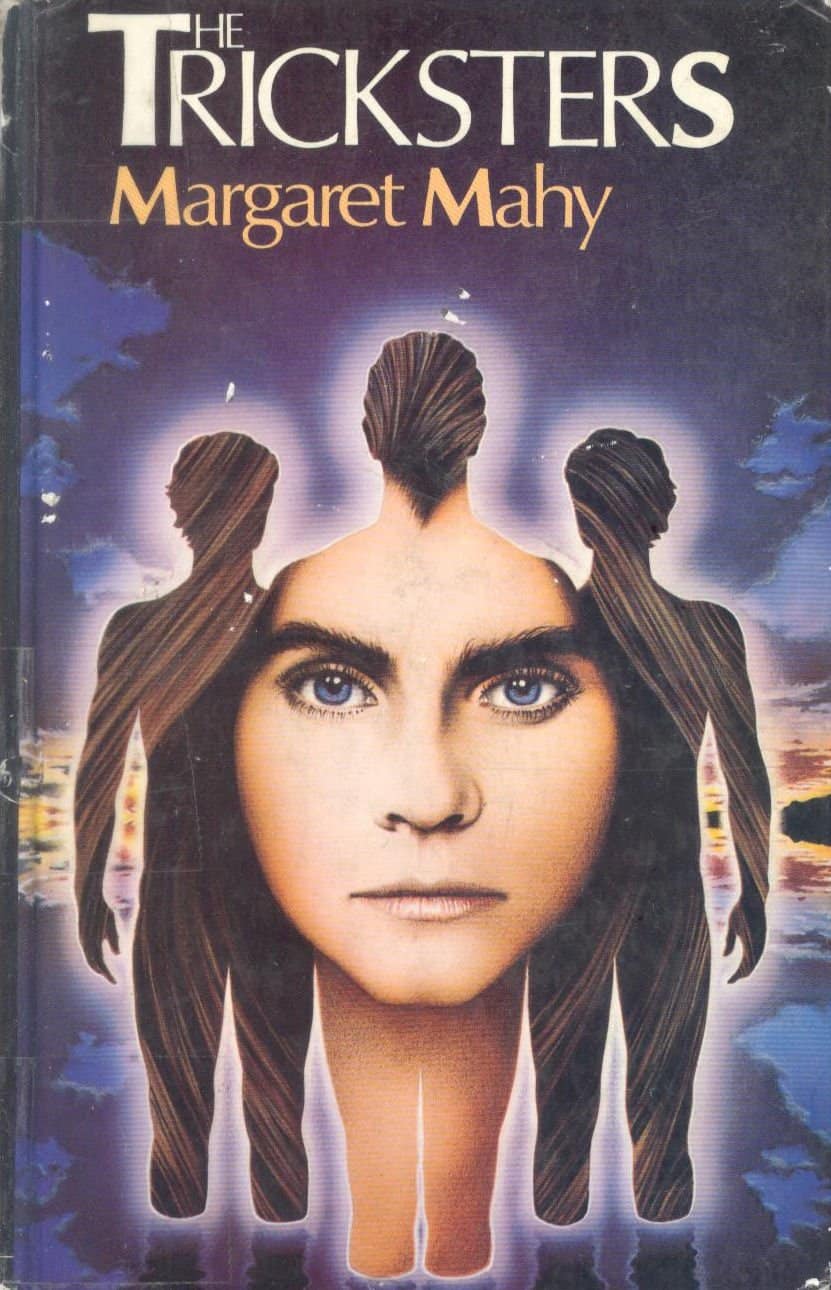The Tricksters is a young adult novel by New Zealand author Margaret Mahy, first published in 1986. Mahy wrote many stories for children, but The Tricksters seems to be one frequently talked about in scholarship circles, alongside The Changeover and The Haunting, which both won The Carnegie Medal. The Tricksters is a rare example of the new female mythic form, in which a main character (often femme, sometimes not) thinks and feels their way through a problem rather than leaving home to go on a journey and fight a bunch of opponents.
A large number of stories deal with the concept of ‘many selves’, often by creating some kind of mask (a false way of presenting to the world) and then having it ripped off (happily) at the end. Only once we live our authentic selves can we be happy… That’s the general message in such stories. The tricksters in this book are three corporeal representations of a single person — they all share the same memories, for instance. This is another way of dealing in fiction with the concept of the many selves.
These three iterations of the tricksters line up with Matt Bird’s head/heart/gut theory:
Ovid: head, a master of metamorphoses. (The mind usually believes he is the leader of the group, and he usually isn’t.) The mind character also thinks the head is the most important part of the body. Katherine Mansfield wrote in her journal that the ostrich makes the same mistake: “The ostrich burying its head in the sand does at any rate wish to convey the impression that its head is the most important part of it.”
Felix: heart, submerged in life but striving toward dominance in the course of the story. Felix and Harry fall in love.
Hadfield: gut/instinct—at one point he tries to rape Harry.
American MIT philosopher Irving Singer (1925-2015) divided sex into three separate aspects:
- Eros: The aesthetic joy we take in others. ‘The affective glue that binds us to other persons, things or ideals and to ourselves’. Humans are visual creatures but it’s not necessarily about the visual. In The Beauty Myth, Naomi Wolf writes at length about all the different forms of eros. We can be attracted to someone’s intelligence. The eros aspect of sex best equates to the ‘head’. As philosopher Damon Young says in his book Getting Off, “Eros need not be libidinal”. Referring to Shulamith Firestone’s book The Dialectic of Sex, Young writes “we can respond erotically to various and varied others — from lovers to friends. It is not just a genital swelling, but a ‘spark’, as she puts it, which fires over ‘the spectrum of our lives’. Because of this, we can have a broadly erotic response to objects other than human beings.”
- Romance: The ‘heart’. Romance is notoriously difficult to describe as it differs across time and across culture.
- Libido: ‘a somewhat automatic trigger for generating behavioral and physiological processes related to reproduction’. This is about biological urges (though is rarely about making babies, in fact). Libido is to humans as rutting is to animals. This is all about instinct and equates to ‘gut’.
The Tricksters is a coming-of-age novel about a young woman who is coming to terms with the various aspects of sex. Some aspects are thrilling; other aspects terrifying. When she conjures up three different manifestations of the same lover, she is imaginatively exploring and codifying these conflicting aspects. Unlike many young adult authors of the 1980s, Mahy does not punish her young women for exploring sex. She celebrates it. Though we are used to celebrations of sexuality in contemporary young adult literature, Mahy was ahead of her time.
SETTING OF THE TRICKSTERS
[The Tricksters] begins as a family Christmas story, with Jack and Naomi Hamilton, their five children and assorted guests arriving at their summer home, Carnival’s Hide, on the beach in New Zealand for Christmas is also midsummer.
PUBLISHERS WEEKLY REVIEW
New Zealand children’s authors, like Australian, are in a bit of a bind when it comes to setting. Set a book at home, you may be applauded by local audiences but make few international sales. Set a book abroad, you’ll let down local readers but attract the international sales. This is a problem American writers don’t seem to face, because American settings are seen as the default — culture understood by every English speaker.
I had undergone a sort of imaginative displacement because even though I was born in New Zealand, I’d been brought up on English books, lots and lots of English books, and very few New Zealand ones. There weren’t very many then.
I do feel that I’m essentially a New Zealander. I’ve always been interested in the fact that I found it hard in the beginning to write about New Zealand. But the time came when I found I could write a story set in New Zealand without feeling too self-conscious or too deliberate. The setting just seemed to become a natural part of the story. And that book was The Changeover.
INTERVIEW WITH MARGARET MAHY AT THE HORN BOOK
Old, easy and single storeyed, its verandah sprawling with purple bougainvillea, the house was welcoming yet still secret, bathed in sunshine yet spreading around itself a gentle skirt of shade, sharpened only by the gleam of stained glass in the front door. The slope of the front roof, curiously parallel to the sharp crest of the hillstops behind it, was interrupted by a single central dormer window, a little extra eye set above the steadfast gaze of other larger windows all looking out to sea under the rich fringe of purple and green.
THE TRICKSTERS BY MARGARET MAHY
There are a few minor details which make this story specifically a New Zealand one, for exmaple the Tom Thumb roses (a NZ variety).
PERIOD — Early to mid 1980s
DURATION — The lead up to Christmas, including the Summer Solstice (Part One), Christmas (Part Two) and New Year. Teddy Carnival has drowned three generations ago.
LOCATION — A fictional beach called Carnival’s Hide, which will familiar to those who grew up in 1980s New Zealand. There’s a nearby crater, so we know a volcano is nearby. New Zealand deals with the constant (though rare) threat of volcanic eruption and earthquake, both mentioned in this novel. I never experienced a volcanic eruption or a significant earthquake growing up in 1980s New Zealand, but New Zealand has been rocked by both in the past decade. To live in New Zealand is to feel like there’s a monster living just beneath the earth. This is reflected in Maori mythology, and also in Margaret Mahy’s The Tricksters.
ARENA — Some of the characters come from the other side of the world. Their newness to the New Zealand environment affords Mahy a convenient opportunity to explain specifically New Zealand things (to a non-New Zealand readership).
MANMADE SPACES — An old beach house (bach, pronounced ‘batch’). There’s a whare on the beach. (Maori building)
On the first page, the text evokes a folklore setting, for Carnival’s Hide, the summer house the family is vacationing in, is described as looking like a “magician’s sign”. The house proves, indeed, to be a signifier of magic, for it is haunted. Harry even comments on the haunting, saying, “Something is waiting”.
Waking Sleeping Beauty by Roberta Seelinger Trites
This holiday house is a dream house in some ways. It is also perhaps a Genius Loci (a location with a mind) or a sapient house (similar). Mahy is utilising the tropes of psychological horror; it’s all coming from Harry’s own mind, but feels completely real.
The house had not been changed by any magic of Ovid’s. Harry considered that possibility, but a magical illusion would have restored the walls without streaks and stains. The house itself was struggling to reform around a core of memory, recharged by the presence of Ovid, Hadfield and Felix, whatever they might turn out to be. Yet the hall, marked by rich and ruinous transformation from present to past, had become the imagination of the house. Yesterday, all rooms had opened away from it. Now it felt as if all rooms must lead back into it.
The Tricksters
Harry is sleeping in the attic, with a low roof which puts Harry in an elevated, omniscient position as observer and narrator on the family. From up there, she can see and hear what’s going on elsewhere in the house.
Interestingly, this is a horror house which is able to reconfigure itself. This is clearly Harry’s imagination doing the reconfiguring, but the experience is the same. This trope is utilised in Monster House (a Halloween feature film for kids) and in Coraline. There’s an element of it in “The Yellow Wallpaper”.
NATURAL SETTINGS — A bach next to a New Zealand beach.
WEATHER — The weather between Christmas and New Year in New Zealand is infamously unsettled. (Climate change seems to be making it more so.) There’s mention of a nor’ wester (a warm wind). The wind is used as pathetic fallacy; after Harry’s assault by Felix down on the beach the wind ‘turned to the south’ (cold) ‘and a different cloud mottled the sky’.
TECHNOLOGY CRUCIAL TO THIS PARTICULAR STORY — There may or may not be some technology which your plot will rely on. In some genres (especially science fiction) this technology will be central.
LEVEL OF CONFLICT — 1980s felt like a peaceful uneventful time to me, who was a little younger than Harry but not by much. In the wider world, an oil crisis was happening and lots of people were doing it tough with massive mortgage repayments, but money doesn’t seem to be an issue for Harry’s family. Here on holiday, they are isolated from the rest of the world and also from the rest of their normal life: We know very little about what Harry’s life is like outside this brief holiday period.
The conflict that happens here is between the family, and there is plenty of foreshadowing that there’s something rotten going on under the surface. We eventually learn that Harry’s father is the genetic father of Emma’s baby, Tibby.
Margaret Mahy […] rewrites the folktale plot in a number of ways, but her revisions are as likely to address mythological narratives as they are fairy tales. The Tricksters, for example, concerns itself with effecting social change through the construction of family. Ariadne, called Harry, discovers that her father has had an illegtimate child by her older sister’s best friend, so much of the narrative involves how the family learns to heal from the pain of this crisis. Paralleling the family crisis plot is a supernatural plot colored by fairy tales and classical allusions that describes Harry’s process of claiming her own subjectivity.
Waking Sleeping Beauty by Roberta Seelinger Trites
THE EMOTIONAL LANDSCAPE — Marketing copy describes a ‘warm chaotic family’, and that’s how the story opens. But there’s something dark happening beneath the veneer of warmth. This is definitely a ‘snail under the leaf’ setting.
Importantly, the 1980s were different from the 2020s when it came to popular notions of consent. This was an era in which, for women, dominant narratives of desire and excitement included requisite submission. Margaret Mahy is exploring issues around women and consent in The Tricksters. Content note: Harry is scared and intimidated by the trickster characters. She manages to extricate herself before most of an assault happens, though the men keep being creepy and no one else in the family seems to notice or care. Although in the story these trickster characters are purely imaginative, they do interact with Harry’s real world on the page.
Gothic Setting of The Tricksters
This shift in the location of the Gothic is … responsible for another whole set of conventions: trapdoors lead upward, not downward, houses extend into the landscape rather than open up with inner chambers, the family is not withdrawn and suspicious of strangers but dangerously free with its hospitality, the common motif of incestuous inbreeding is reversed with the family secret having to do with adultery-sexual relations inappropriately external to the family. And the cultural relocation of the Gothic genre … is what enables Mahy to transform a genre in which “the realm of the Gothic house is the realm of the patriarch,” so that the Gothic house in Mahy’s The Tricksters is ultimately identified with, and as the possession of, the central character Harry, one of Mahy’s many astonishingly powerful young heroines.
The Gothic in Children’s Literature: Haunting the Borders
STORY STRUCTURE OF THE TRICKSTERS
PARATEXT
Reality and the supernatural intertwine in this exciting and chilling novel from an award-winning author; As the Hamiltons gather at their holiday beach house, Carnival’s Hide, for their Christmas celebrations, the warm, chaotic familty atmosphere is chilled by the unexpected arrival of three sinister brothers. Who are they? Where are they from? Only 17-year-old Harry, the middle daughter, is close to seeing the truth. Are these brothers her own invention, or are they truly descendants of Teddy Carnival who drowned there many years earlier? As the brothers gradually reveal their purpose, long-hidden family secrets are also unfurled. No one emerges unscathed…
MARKETING COPY
The original hardback cover, in which a pair of legs legs create a weird silhouette blending into Harry’s neck, suggests a work of science fiction. This isn’t science fiction.
An updated cover below utilises a colour you don’t see often as a dominant colour on book covers: green. I’ve heard this is because green is the least likely colour to sell. I’m guessing green was chosen because it is reminiscent of fairies, and the tricksters are a type of fairy (in the wide, non-Tinkerbell sense).
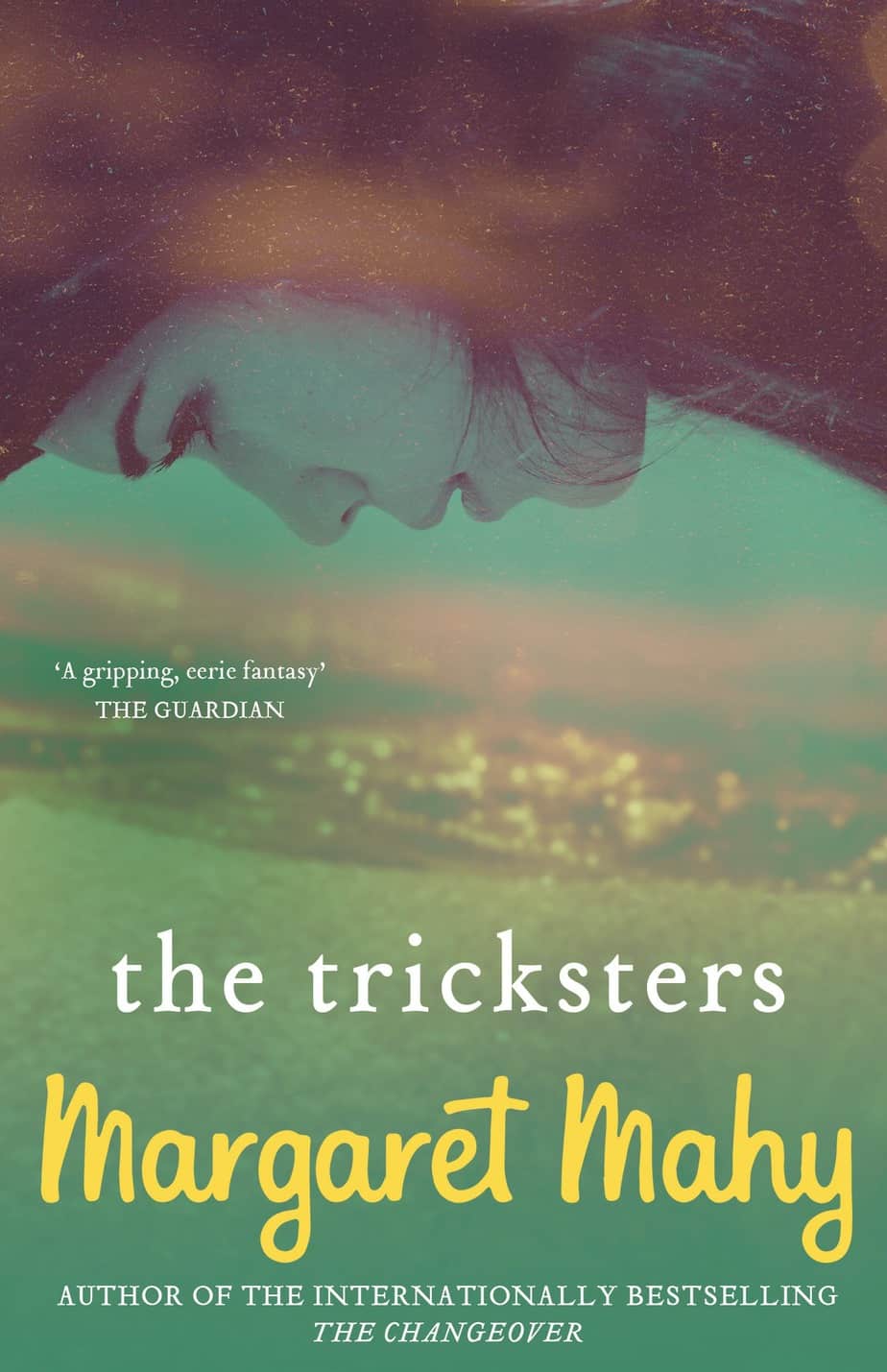
Where yesterday’s white surfaces had flung light backwards and fowards in the hall from one wall to another, a jungle of painted leaves and flowers now stole morning out of the air and turned everything to a greenish twilight.
The Tricksters
In their review of The Tricksters below, Publishers Weekly mention the novel’s maze-like quality (often used synonymously with ‘labyrinth’). This in itself harks back to myths from antiquity cf. the Ancient Greeks, with Theseus and the Minotaur. It’s helpful if, before reading, readers know the basic story of Theseus, Ariadne and the Minotaur.
Although Jack and Naomi still love each other, their marriage has been shaken by a past, unmentioned crisis, duly noted by daughter Harry, who at 17 is the family observer. Harry is obsessed with her creation of a torrid, romantic novel. When her obsession collides with the family fascination with the ghost of Teddy Carnival (the young son of the house’s first owner, who drowned in an apparent suicide), the supernatural explodes into reality, as three brothers, the Tricksters, take human form. Harry recognizes her own book characters in the brothers, and is determined to keep them from destroying her family. Ultimately, the supernatural and reality merge in one dreadful moment, and it is Harry in her transformation into her real self, Ariadne, who shatters all of the family’s illusions. Mahy has combined stunning visuals with intelligent, very accessible characters. The supernatural presence of the Tricksters becomes a maze through which Harry, her family and, finally, the reader, must travel in order to unravel the novel’s mysteries. A searing depiction of an entire family’s rite of passage, The Tricksters is one of the most intellectually challenging novels written for teenagers in years. (14-up)
PUBLISHERS WEEKLY REVIEW
PART ONE
CHAPTER ONE: A POSSIBLE GHOST
A car load of characters arrives at a possibly haunted house in a rural New Zealand township known as the Hide.
Harry Hamilton — seventeen years old, sunglasses, female, ‘moony’, our viewpoint character.
Much like Emily in Look through My Window [by Jean Little], Harry is a writer. She wishes for a book with magic powers that would make manifest each reader’s agency. “As you read my book you alter the world. You read Chapter One, look up from its pages and—hey presto—things have changed. She catalogs the changes that would occur as the reader reads her magic book: the world would get brighter, the moon would reproduce, mirrors would create rainbows, the people who live in mirrors would find their true selves, and “when you turned the last page, you’d find that you were a book yourself … You were a book, and someone else was reading you. Story and real world take it turn and turn about, you see.” This intertextually powerful book that Harry envisions essentially becomes the plot of The Tricksters, for by writing a romance of “mysterious and threatening love”, Harry becomes the vehicle through which the ghosts can enter Carnival Hide.
Waking Sleeping Beauty by Roberta Seelinger Trites
HARRY, ARIADNE AND FEMINISM
The thread that proves to be Ariadne/Harry’s conduit is her storytelling. But unlike the original Ariadne, who gives her spool of thread to Theseus so that he can achieve the transcendence she never gains, Ariadne in The Tricksters uses her thread of storytelling to effect her own transcendence. Ariadne falls in love with the benevolent manifestation of Teddy’s schizophrenic ghosts, and because of the love she feels for him she gains a better sense of her own agency. Harry recognizes that the ghosts are physical embodiments that have been possible only because she has effectively conjured them up in her writing. Just as her namesake’s thread provides Theseus with a conduit out of the labyrinth, Harry’s tale spinning provides the ghosts with a conduit into reality.
Waking Sleeping Beauty by Roberta Seelinger Trites
Seelinger Trites is touching on an aspect of story which I’ve seen few commentators mention: I’ll call it the Anti-feminist Giving Tree plot. In this storyline, a femme character sacrifices everything she has and is to please/pacify another character, often masculo coded. Don’t be thinking this plot is limited to Shel Silverstein’s The Giving Tree. It’s everywhere. In Australia we have another stand-out picture book example in Nick Bland’s The Very Cranky Bear. If these two books stood alone outside a long history of feminine sacrifice, they wouldn’t be a problem; they’d simply be nice little stories about not being selfish. But those who understand the long history of misogyny tend to rail against this particular plot, and some, like Mahy, take an old story and turn it around. Harry will not be giving part of herself away in this book. She is claiming a part of herself. In the Ancient Greek myth, Ariadne gives away her spool of thread. Though she is in love with Theseus (and that’s why she helped him out in the first place) he abandons her on the beach as he sails away, maybe because he’s drunk, or maybe deliberately. Either way, he is callous. In Margaret Mahy’s The Tricksters, Harry/Ariadne not only keeps her ‘thread’, the thread is metaphorical and she uses her self-generated fantasy for self-actualisation.
Jack Hamilton — Harry’s father
Anthony Hesketh — visitor to New Zealand. Has come from England because he is interested in English Forests of the Antipodes.
Serena — round and romantic, falls in love with many boys, usually the boyfrineds of ‘their older sister Christobel’, but this time fixated upon the visitor. Seven years old.
Benny — seven years old, wears glasses
Also mentioned:
Naomi — works at the local museum (we deduce she is Jack’s wife)
Christobel — an off-stage older sister for now. When introduced she will be a manipulative charmer older sister archetype, or a type of seductive witch.
Teddy — introduced only by name right at the end. This entity “may want to go for a swim”.
The house is considered haunted because of a man called Teddy, Edward Carnival’s son, who drowned in the nearby sea. Also, Edward’s wife died while giving birth to their third child. The characters all talk about the history of this house for the benefit of the newcomer. The seven-year-old’s artless commentary contrasts with his father’s, who is clearly intent on selling the virtues of the beachhouse to Mr Hesketh.
The ghosts are tricksters. They turn out to be three manifestations of Teddy Carnival, son of the original owner of Carnival’s Hide. That Teddy ends up having three ghosts metaphorically represents the multiple nature of subjectivity. Classical allusions permeate the text. One of the ghosts, for example, is named Ovid after the Greek poet.
Waking Sleeping Beauty by Roberta Seelinger Trites
The reader isn’t told whether there is really a ghost. Margaret Mahy said in interviews that although she didn’t believe in supernatural ghosts, she certainly believed it possible to be haunted by people and events from the past, which is a concept many writers work with.
(You don’t have to believe in ghosts in order to enjoy or create a good ghost story.)
CHAPTER TWO: THE WRITER UP UNDER THE ROOF
The narrative camera follows Harry up into her attic bedroom at Carnival’s Hide, a spartan room. Harry prepares to swim in the sea. We learn a secret: Harry likes to write. We are told she has another secret, but as the chapter ends we are not told what that is.
Harry has been described in this chapter as a girl who feels her surrounding is alive and haunted, so I’m guessing her secret is that she can see ghosts or something.
CHAPTER THREE: HAND TO HAND
We are introduced to Charlie, Harry’s older brother, and also to Charlie’s friend Robert Huxley. I’m thinking this is a lot of names to remember before we know much about any of them. Just as well we had that breather chapter where Harry moons around in her attic space. The visitor from Britain and Charlie’s friend joke about Serena’s crushes on them, which doesn’t age very well, even though I know the pair of them are just joking and not actually interested in a little girl. The Kiwis are calling the visitor “pommy” which I know from experience British people despise. But Kiwis did call British people pommies back then (and many still do), which is more affectionate (in its intent) than pom. (Pom is most often colocated with ‘whinging pom’).
Robert has dark curly hair and looks like Lord Byron. (Do young readers know what Lord Byron looks like?)
Charlie has a boat called Sunburst. He and his mate Harry are wearing wetsuits and have been down on the beach. I’m reminded that in 1980s New Zealand, you didn’t have to come from a super wealthy family to have access to all of these riches — holiday houses, boats.
Harry’s younger siblings play on the flat rock near the water, which is where the kid died. The kids joke about summoning him back to life. Harry tells them they’d be terrified if he really did turn up.
The younger kids talk about what they’d like for Christmas. Harry wants “everything”. She feels her real name is Ariadne, an intertextual reference to a character from Greek mythology:
Ariadne was the daughter of King Minos of Crete and his wife Pasiphae, in Greek mythology. By her mother, she was the granddaughter of the sun god Helios. She is best known for her pivotal role in the myth of Theseus and the Minotaur.
Greek Mythology
In the myth, after Theseus volunteered to slay the Minotaur, to stop all the young people being sacrificed year after year, Ariadne’s planning and thinking saved him: She gave him a sword (had he not thought to take his own weapon?) and also a ball of string so he could find his way back out of the labyrinth. It’s not actually that hard to find your way back out of a labyrinth because labyrinths are not mazes — all you need to do is keep one hand on the same wall and keep walking. However. Ariadne’s role in that story cannot be underestimated. These days, the Ariadnes get to be the stars of the story, thinking and planning their way out of crises without even falling in love with a hero man. These stories have been called the new ‘female’ mythic form. They started to take off in the 1970s with second wave feminism.
Will Mahy’s The Tricksters prove to be an example of the female mythic form? Is Harry about to embark upon an adventure, working her way out of crisis by thinking, planning and feeling rather than fighting? The Ariadne detail is certainly preparing me to think so.
Harry puts on a ring of shell. I remember doing the same thing as a kid. The rings of those shells (whatever they’re called) are too big to fit a finger, though. This was always a mild disappointment.
Under the sea water, Harry has a possibly supernatural experience, feeling as if she’s having someone else’s memories. This freaks her out a bit. When she returns to the rock she finds a man there, though he disappears and she realises she’s seeing a spirit from another realm. He’s dripping wet, wearing a suit and bleeding. Harry dips back under the water. When she resurfaces, the ghost man is completely gone.
She rejoins the rest of her family, but feels there’s a force in the water wanting to pull her back in.
CHAPTER FOUR: A PRIVATE ARGUMENT
By now I’ve realised Mahy makes heavy use of the trick of having characters talk about a new character before bringing the new character onto the stage. Now we finally get to meet Christobel, the eldest sister of the family. She is described as someone who sucks out your soul (kind of like a Succubus, I guess, to continue the folkloric theme?)
Then when Christobel arrives, she mentions Emma (first mentioned by the mother, who has also turned up). Emma is a single mother and I’m reminded of how judgey people were of single mothers in 1980s New Zealand. (Not that it’s changed much.)
We are told that the children’s father is handsome and his handsomeness does not match that of his wife. Others mark this out as somehow wrong, but the narrator tells us we are not to judge this couple in that regard.
Then the cast is thrown together into this big house and we see them interact. Mahy’s particular sense of humour is evident. There’s a lot of detail that feels familiar to me, as someone who also spent Christmases near New Zealand beaches — the two different varieties of plums which everyone was obliged to get through, the wartime mentality that even sour plums should not be wasted.
There are now so many characters I’m having trouble keeping track. This book feels different from contemporary YAL: a must more langurous set up.
CHAPTER FIVE: THE ILLUSTRATED BEACH
The chatter continues between the characters. This book is clearly about the Redemptive Power of Literature; the house is full of difficult but important books which are not read but are too important to throw out. Specific mention: Ovid’s The Metamorphoses. The others say that Harry reads anything, anywhere. (This is where Harry gets the names for her tricksters, and should’ve clued me in to the fact that they’re imaginary, yet I somehow missed this.)
Twenty-one year old Christobel has filled up the space, outsing our viewpoint character, younger sister Harry, who is quiet and bookish and also observant (which is why she makes for a good viewpoint character).
There’s a ‘wife swapping’ joke which has spanned several chapters already. Anthony, the visitor from England, says he wouldn’t mind that but he’d be out of luck since he doesn’t have a wife.
Christobel and Robert are a couple. The camera follows them out onto the rock, where Christobel feels a chilly presence, and knows they are being watched. She concludes a “goose is dancing on her grave”.
In the kitchen, Naomi is doing jobs and thinks she feels a presence. So does Emma (with the baby) in a separate room. Thinking a nearby presence is Naomi, she asks Naomi if it’s really okay her being here. The camera moves to Harry, sitting at her peaked window, wonders if she’s welcomed spirits into the house by accident. Mahy’s shifts in point of view turn the ‘camera’ into a fish. You can see an actual camera ‘swimming’ creepily along a seaside town in one of the opening scenes of Broadchurch. Horror films also make frequent use of the ‘big fish underwater’ technique. It suggests imminent danger. In narrative form it’s more difficult to pull off, but Mahy does it beautifully. This description of people separate but in the same house reminds me very much of the writing style of Katherine Mansfield, especially “Prelude“. (It is possible that Mahy had not been influenced by Mansfield. The pair are now considered literary greats of New Zealand, mentioned in the same sentence.)
Harry awakes the next morning thinking of poetry. She’s got this story going on starring Prince Valery, winged and wicked Belen and a damsel in distress called Jessica, who Harry maps onto herself. Harry is clearly someone with an expansive paracosm. She spices up her real life with this imaginary worldo of “beautiful lovers… eternally ravishing one another among flowers and jewels”. Harry would’ve been into the Twilight stories, I reckon.
Mahy punctures this with a description of Harry in her “track suit” coming down to “an empty morning”. She puts on her sneakers and goes for an early morning jog. Older sister Christobel has previously commented that Harry has recently lost weight — everyone was obsessed with weightloss in the 1980s and 90s, and jogging was thought to be one good way to do it. (Fatness as connected to laziness.) We’re to judge Harry positively for getting up early and going for a run.
Yesterday Harry pretended to marry the sea to entertain herself and her brother.
Today on the beach, two men appear from the spirit realm, standing close enough to touch Harry. She knows they have “crawled out of a wrong gap in the world”. One comments that she is alone on the beach. This book is well-populated by creepy men. Every single one of the men in this novel has proven creepy so far. Using a boating metaphor, the close third person narrator writes, “they had struggled through holding on to the silken clew of [Harry’s] own story”. Harry blames herself for their appearance. She has “closed the door” on the ghost of Teddy Carnival, and now these creeps have shown up. “Their streaked hair fell onto their foreheads like question marks, upside down and therefore devilish. They had never been children; they had never been innocent”.
This taps into a few ideas:
- that there exists an age of innocence
- the connection between devils and the upside down.
The Cross of Saint Peter is an inverted Latin cross, traditionally used as a Christian symbol, but in recent times also used as an anti-Christian symbol. (What else is anti-Christian? The devil.)
Much more recently, the TV show Stranger Things makes use of this devil/upside-down symbolism. For similar reasons, mirrors are intrinsically creepy.
I’m now wondering if conceptions of the underworld from antiquity involved a mirrored land of evil rather than, say, an underground basement. (Let me know if you have an answer to this.)
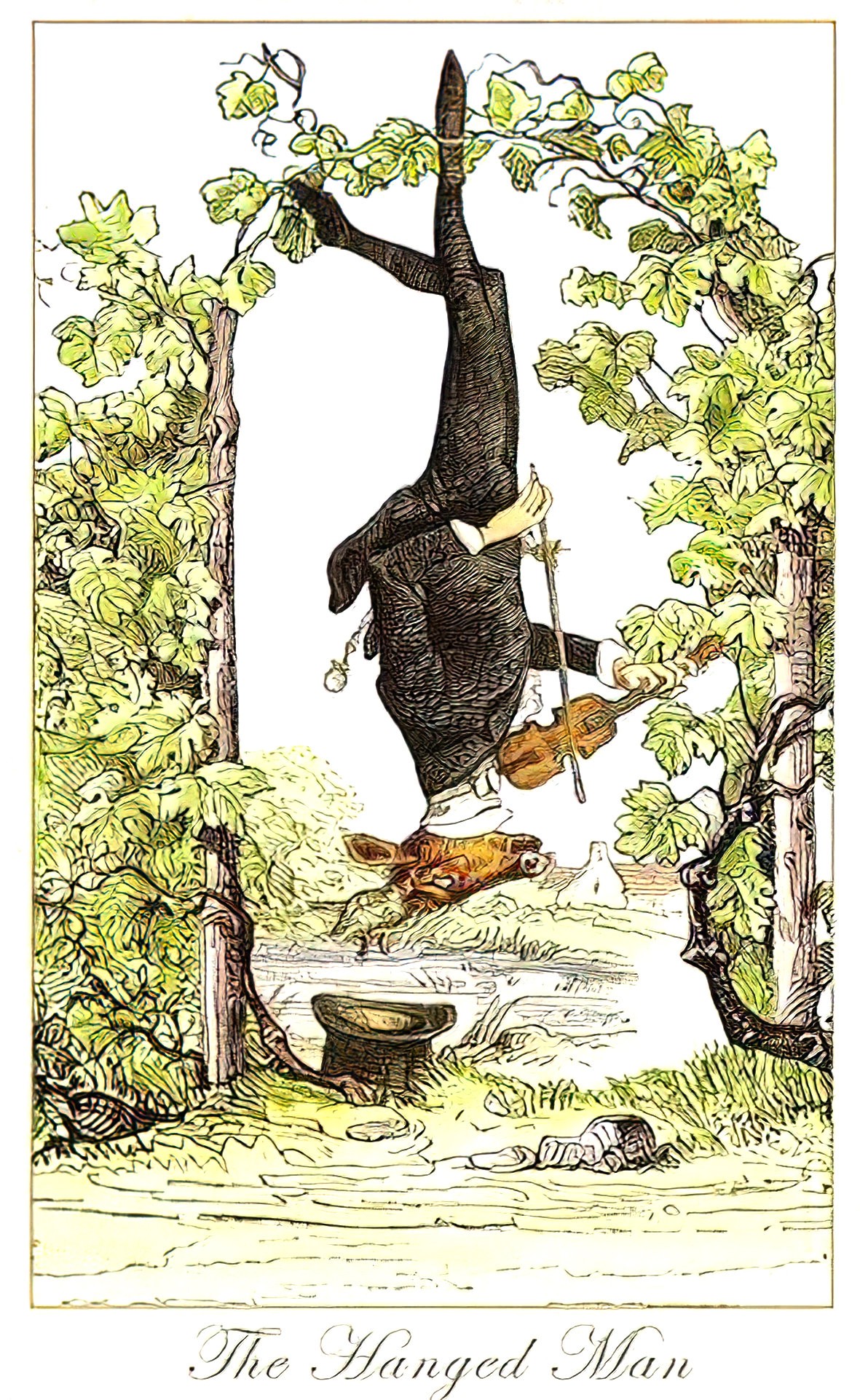
CHAPTER SIX: VISITORS
The three men, who seem to mirror each other (are two of them holograms of the other?) deliberately creep Harry out. Women will be familiar with this, and also familiar with the relief Harry feels when Anthony comes down to the beach. At this point the creepy spirit men change demeanour entirely and seem suddenly friendly.
As reader, I’m wondering if Anthony will be able to perceive these men, but it turns out he can. It doesn’t seem to occur to him that it’s a bit weird three men are standing so close to a teenaged girl out for a solitary jog. I know I’d be suss. That was the 1980s for you.
Also, I’m thinking about the English immigrants I know, and my time in England, and English people have a much smaller personal space than New Zealanders. I wonder if Mahy is making use of that cultural difference.
The creepy men tell Anthony that they are descendents of Edward Carnival and have come from England looking for Carnival’s Hide.
Harry takes Anthony’s appearance as her cue to escape.
As the big family are eating breakfast in their happy, cosy kitchen, the men enter the house, lamenting that the original wallpaper has gone. The men, who Harry has named The Rainbows, introduce themselves as Ovid, Hadfield and Felix. Harry knows that these real-world visitors match her paracosmic world so closely that she is influencing the real world somehow. She also knows no one would believe her if she said this, so keeps it to herself. Crumb the cat is usually aloof with strangers but loves these men.
The three young Carnival men are travelling magicians (carnivals). They are triplets (two identical, one fraternal. Hadfield is a dextrocardiac, with his heart on the opposite side. This continues the motif of the upside-down. (I wonder when Mahy is going to bring mirrors into the story?)
Naomi, the mum, says the tricksters can stay in the whare if they want to. But she seems to have noticed that they paid Harry especial attention. Harry isn’t giving anything away. Serena has dubbed her “Harry The Silent”.
Aha. Anthony now asks Harry if the men had been bothering Harry down on the beach. He rather stupidly does this after giving Harry a start. Does he not seem to realise that a strange man staying in the same house as a teenage girl who may or may not have been scared by other strange men may not want to trust him, either, if he approaches her alone? Anthony tells Harry he’ll believe her even if no one else does, which is actually demonstrative of how things were back then (and still are, sadly).
Mahy uses a word in the text: entantiomorph. I believe this is a spelling mistake? The word is enantiomorph: each of two crystalline or other geometrical forms which are mirror images of each other.
Anthony observes, “They’re not what they said they were… Though God help me, almost nobody is, I suppose… Not even me. But don’t forget.”
I feel that’s a neon quote relating to the theme of identity, and the secret selves we nurture as we graduate from childhood into young adulthood.
Anyway, I’m thinking are we meant to believe these three weird ass looking dudes have turned up, without knocking, into the house, and the only adult slightly concerned about their presence is Anthony? What’s going on here? Can the other adults really see what Harry is seeing?
CHAPTER SEVEN: IN THE SUN
The plums get yet another mention. Are the plums a motif, or simply a gag that runs right throughout the story?
The whole extended family is down on the beach. Mahy makes various intertextual references, to Robinson Crusoe, to The Wonderful Wizard of Oz. A more omniscient point of view has shifted away from Harry, and first turns to Emma, who is giving Anthony her backstory while also giving the reader her backstory. Anthony is clearly the sort of man who likes young women to confide in him. For her part, Emma is surprisingly mature and reflective given how relatively little time has passed since she became pregnant with her child.
Robert accuses Christobel of nagging.
It is revealed that Harry is shortsighted,and is wearing sunglasses instead of her prescription glasses. (I deduce she is meant to be short sighted because of all the book reading.) Sunglasses make it harder for her to read faces, and even harder to read voices, which all contributes to the feeling that Harry (and the readers) can no longer distinguish between veridical reality and fantasy.
As for the tricksters, they say their clothes are stuck onto them, which turns them into something out of a book, or into archetypes, since magicians have a certain costume etc.
I believe the main function of this function was to blur the lines between fantasy and reality.
CHAPTER EIGHT: THE HONEST MAN
Now Mahy takes the reader back to Harry, who has been observing Felix and Christobel. She feels Felix has been ‘working on’ Christobel and is determined to avoid the same thing done to her.
Creepily (to me), Felix takes Harry’s arm on the way back from the beach to the holiday house. He is ‘unexpectedly cool’ (a well-known ghost trope). Mahy describes Harry’s physiological reaction to his touch:
Harry felt a strange little twist, high up under her ribs, cutting her breath short and startling her as if she had had a thrilling splash of cold, salt water on hot, bare skin.
A moment later, Harry is trying to detach the man’s hand from her arm, politely but firmly. He continues to engage her in conversation and she is drawn into that, knowing better.
Harry reminded herself not to start talking, but found she was already asking a question.
The Tricksters, Margaret Mahy
I’m reminded of what Gavin de Becker advises in his book The Gift of Fear: Survival Signals That Protect Us From Violence:
If you tell someone ten times that you don’t want to talk to him, you are talking to them—nine more times than you wanted to.
Gavin de Becker (The Gift of Fear: Survival Signals That Protect Us from Violence)
Felix is not letting her arm go. This scene between Harry and Felix makes a useful case study in how it’s possible to experience arousal but that does not always go with attraction. The two states must not be conflated.
Felix isn’t leaving Harry alone and I’m not sure how Mahy intends the reader to feel about that. I’ve heard of parents telling their children to ‘avoid tricky people’ rather than what we were told as kids in the 1980s: ‘Don’t talk to strangers’, which is highly flawed and unuseful advice. The advice to avoid ‘tricky’ people is far more useful, and so it’s interesting that Harry literally uses the word ‘tricky’ to describe these ‘tricksters’, because it predates the cultural shift from ‘stranger danger’ to ‘tricky people’.
Harry notices Felix has a scar identical to that of Ovid.
Then the Christmas tree arrives on the roof rack of a station wagon.
CHAPTER NINE: IN THE DARK
The Christmas tree goes up. ‘One Christmas became all Christmases’. Even the older, more sophisticated characters seem to become children again. Mahy is compressing time, one reason for rituals in general. They talk about the meaning of presents. Charlie compares the Tricksters to the Three Wise Men (an inevitable comparison at Christmas time). Jack reads the younger children a few classic Christmas stories (“The Night Before Christmas“, The Tailor of Gloucster by Beatrix Potter). There’s an allusion toCharles Dickens’ A Christmas Carol in the text — ‘ghosts of Christmases past’.
Harry is observing all of this, and then goes to bed herself. She is approached by Emma who asks if she’s seen an item lost by Tibby. Harry knows exactly where Dum Dum is buried in the sand, and volunteers to go down to the beach at night and retrieve it. In the dark, the things they’ve left on the beach look ominous. Seaweed looks to Harry like a severed head with streaming bloody hair.
Felix has followed Harry down to the beach in the dark and startles her by telling her to turn off her torch. He tells her he’s a nocturnal creature, a vampire, and enfolds her in an embrace. He says, “You know you want to”. Harry politely tries to extricate herself from this scary situation by saying that Emma is waiting for her to take Tibby’s Dum Dum back to the house.
The chapter ends with Harry realising that Felix isn’t going to let her return to the house.
CHAPTER TEN: A GROSS COMPLIMENT
There’s a time jump to the following morning. The weather has turned colder. Harry overhears Charlie and Robert talking. They call Ovid Carnival ‘a clever talker’ and ‘a bit of a poof’ (an 80s slur in a homophobic environment). The young men are preparing to go out sailing despite the cool change.
Harry gets up after Charlie and Robert have left. She feels the house has changed somewhat. (Neil Gaiman also uses the trope of the house that reconfigures itself in Coraline.) Mahy has conjured that feeling you sometimes get waking up in a different house and for a moment not knowing where you are. This is sort of put down to Harry’s wearing prescription glasses.
Harry sets off along the easterly slopes. Up on the ridge, she sees two of the tricksters down on the beach, swimming butt naked. But she considers herself an observant writer rather than a voyeur. Water glistening on one of the men’s backs reminds her of angel wings, and reminds me of Twilight vampires. Enjoying this imagery, she runs home and goes back to bed.
The camera visits Naomi and Jack in bed. They’re talking about making this Christmas a happy one. Their conversation comes to an end when noise from children getting out of bed disturbs them.
Harry goes to the bathroom building and meets Felix, who reveals he knew she was watching him naked on the beach. He asks how short-sighted she is. He follows her into the kitchen, holding a bowl of stone fruit, and Harry tries to convey how frightened he made her last night down on the beach. (The reader still doesn’t know exactly what happened.) He’s totally not owning any of it. “The greater the temptation the more forgivable the crime.”… sometimes, if you persist, other people do come round to your way of thinking.” He checks Harry hasn’t told her parents about the incident. She hasn’t, because she felt she handled it well on her own.
Then Harry goes back to her bed and we learn exactly what happened: She struggled hard and eventually got away from him. This is partly because she was covered in sun block cream and slippery. Harry thinks of Leda and the Swan. Leda was assailed by Zeus in the form of a swan.
Hadfield has a black eye and due to some cognitive bias we deduce it was Harry who gave it to him. This is confirmed on the following page; Harry hit him in the eye socket with Dum Dum. The tricksters are playing with Harry, ‘pretending’ to be each other. The tricksters tell Harry Felix is the most dangerous and could kill her. They reveal that they know all about the novel she’s writing. Harry is mortified that they’ve seen it before it’s finished. Christobel takes off with the tricksters for the nearby town of Gorse Bay to find something to do.
Harry only feels safe after she’s hidden her book inside the boxes that hold Christmas decorations and slides herself between a gap near the roof.
CHAPTER ELEVEN: FAIRY GODMOTHERS
Alone with Emma, the misogynist Robert takes the opportunity to complain to her about Christobel, his girlfriend and Emma’s best friend. They discuss how they’ll never trust little Tibby when she is a teenager, under the idea that teenagers are inherently untrustworthy.
Naomi appears to say they’ve all been invited to a BBQ with the wealthy Taverners, who have just built a pool despite living near the beach.
The household does a make-over on young mother Emma so that she and Robert can attend the Taveners’ BBQ as a (psuedo-) couple. Harry will be looking after Tibby. With everyone else out of the house, the sound of the sea and the wind seem to merge. Harry plays an Australian song, released 1982.
Harry takes Tibby to play in the shallow part of the sea then makes her supper, all the time enjoying a carnivalesque joyfulness and the freedom of being almost alone. She wonders if Hadfield is mortal and could be harmed/killed. With Tibby asleep, Harry admires the christmas tree, listens to carols (loudly) and lies outside in the hammock. Harry returns inside and tries on Christobel’s red silk dressing-gown, which Harry thought earlier made Christobel look sophisticated. ‘She could try out what it might be like to be beautiful.’
Harry then has a revelation that all three of the tricksters came out of her own imagination and are really one and the same person. She compares her struggle to that of Jacob wrestling with the angel, a story from Genesis. Jacob spends the night alone on a riverside during his journey back to Canaan. He encounters a “man” who wrestles with him until dawn. Jacob is given the name “Israel” and blessed, but the “man” refuses to give his own name. We can’t be sure who the “man” is meant to be: a dream figure, a prophetic vision, an angel, a protective river spirit, Jesus, or God.
Now that the tricksters have been explicitly revealed as Harry’s imagination, they don’t feel so creepy to me.
CHAPTER TWELVE: FELIX HALTED
Harry and Felix become more intimate, but Harry isn’t a pushover naif. When Felix tries on her glasses and exclaims how short-sighted she is, Harry says, “I suppose you think you’re seeing me in my true beauty.” Harry understands the common makeover trope in which a girl takes off her glasses and suddenly becomes beautiful, related to the wider issue of what it even means to be beautiful, and how girls are acculturated into waiting for men to pronounce them beautiful before owning it.
“I don’t mind your glasses, actually,” Felix continues, as if his opinion is the one that matters most, even though Harry didn’t ask for it.
Harry tells Felix that he is her invention and that she can cross him out any time she likes.
Mahy is making the most of the symbolism of glasses and short-sightedness in this chapter. ‘Seeing is believing’. It’s as if Harry’s glasses allow her imagination more scope.
Felix is slightly outraged to learn he’s a figment of someone’s imagination. “It’s a big jump though, isn’t it, from saying our names aren’t our own to saying we’re actually not real.” In fact, in fiction, one leads directly to the other. Mahy knowingly explores this trope, and how names (labels) affect our identity.
Felix tells Harry she should be ashamed for having such thoughts — a comment on how young women (in particular) and young people (more generally) are taught to be ashamed and alarmed at burgeoning sexuality. Harry grows scared of the idea that the horrible thoughts inside the Tricksters’ heads really come from her own head. ‘I’m not scared of your conjuring!” she shouts, like people are inclined to shout when they’re not scared at all.
“I tell you what — let’s kiss just once and then be nothing but good friends,” Felix suggested, as if he thought it might be possible.
The Tricksters
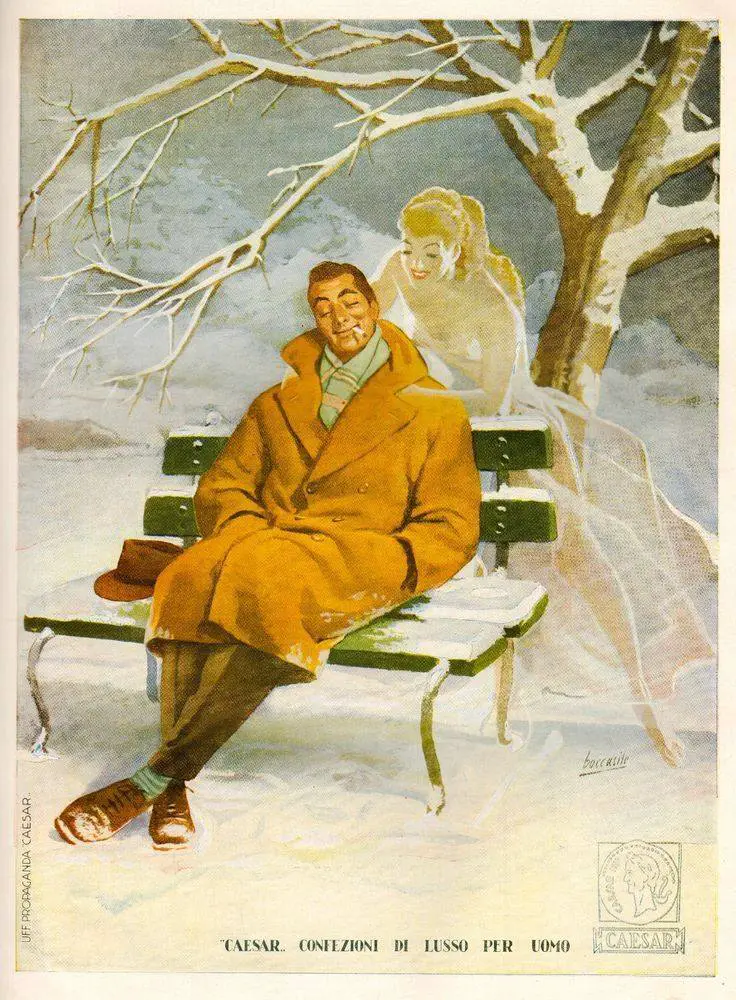
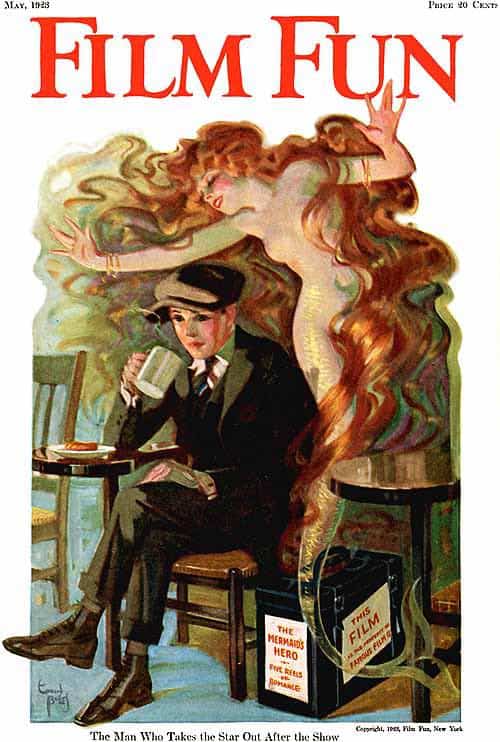
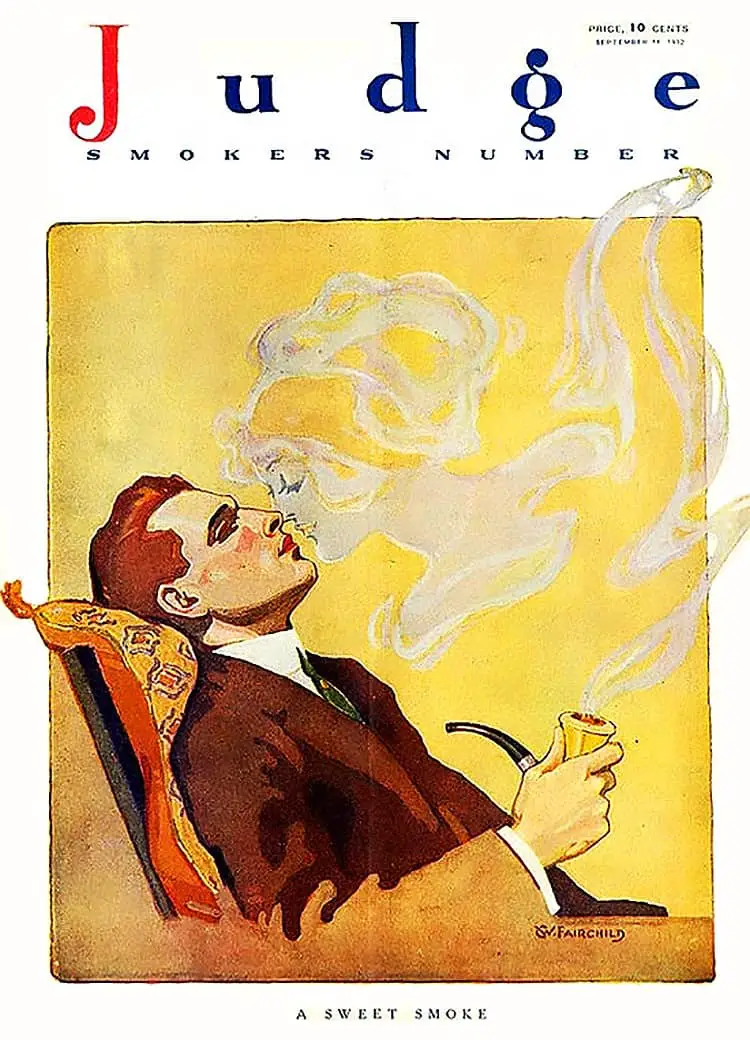
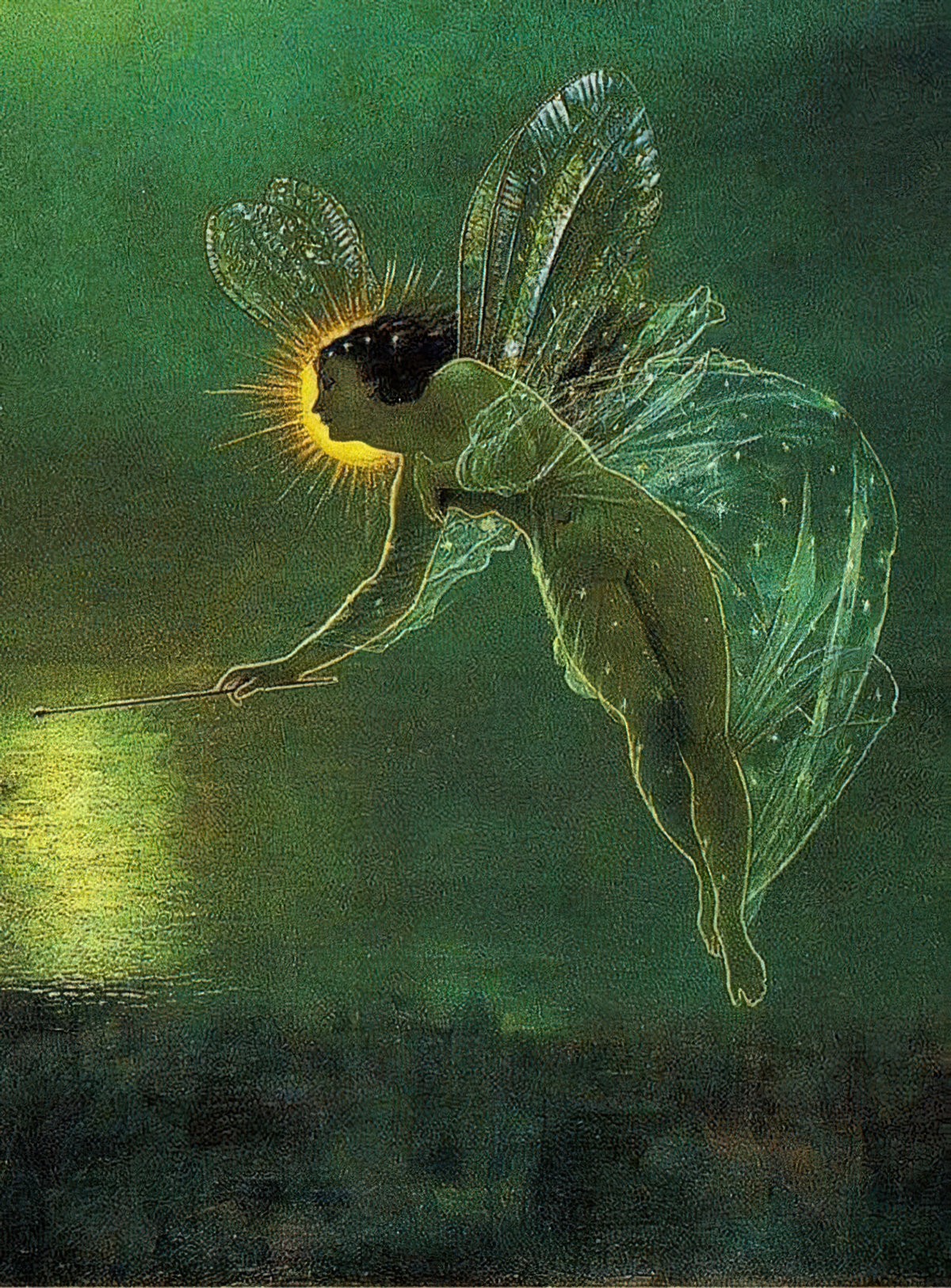
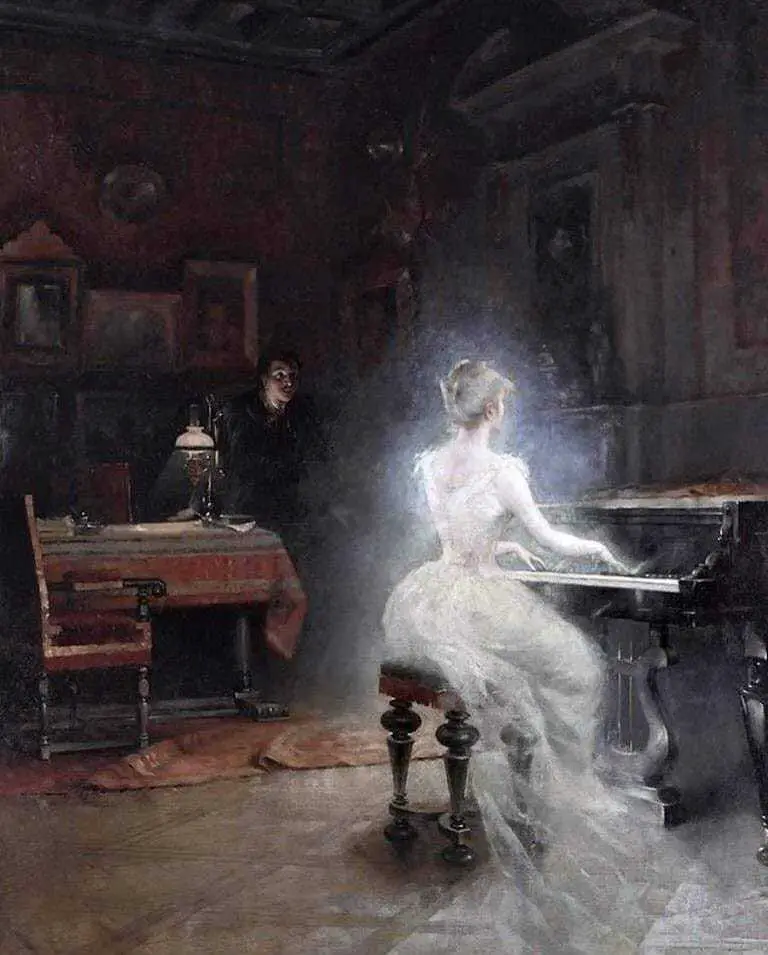
CHAPTER THIRTEEN: MIDSUMMER
The rest of Harry’s family return from the Gorse Bay expedition, and I’m starting to wonder about Mahy’s trick of having Harry’s imaginary characters interacting with the rest of the family as if they’re real. When Felix talks to Jack, is this dialogue happening but with other characters, or is it not happening at all?
“Didn’t you go to Gorse Bay with the others?” [Harry’s father] asked, looking from Felix to Harry.
The Tricksters
Is Jack looking from thin air to Harry?
“Who does he think he is, calling you Ariadne?” Jack said, as the front door closed. “It sounds a bit pompous.”
The Tricksters
“You chose it for me. Didn’t you mean to be called by it?” Harry asked.
The fact that Jack is speaking to an imaginary character leads me to believe that Harry’s legal name is not Ariadne at all; this is her alter ego, and she made it up herself. Besides, from real life examples, if one kid has an unusual name it’s likely all their siblings will have been given equally unusual names by the parents, and that’s not the case in this family.
(Harry imagines) Christobel arrives home from Gorse Bay and climbs up to Harry’s attic to tell her all about what the other Tricksters got up to. Christobel as a character is functioning as Harry’s more daring, more sexually confident side — perhaps an older version of herself.
PART TWO
CHAPTER FOURTEEN: MAGICAL CHANGES
It is Christmas Eve morning and Harry wakes up to changed (dull) weather and to a shifting house. She imagines she overhears Charlie and Robert talking outside on the verandah about Christobel and the Carnivals, and that Christobel has fallen in love with Ovid. There may or may not have been an earthquake. We simply don’t know what’s true in the world of the story and what’s imagined by our main character.
Charlie and Robert go sailing and Harry is inspired to write some more of her story, but the thought frightens her now.
We learn that both Harry’s parents have contributed to the embroidering of the Christmas stockings. Mahy has been pushing gender boundaries all along. Harry has an androgynous name and descriptions of her clothing suggest further androgyny. (Admittedly, this is partly 1980s NZ fashion.) Why does Mahy make sure to tell us Jack has helped to embroider the stockings? This story utilises ‘thread’ as a motif throughout, so I’m sure it has something to do with that. Jack is very much part of Harry’s plot ‘thread’ (and we’re going to find out how he is further implicated).
Things in the house are freaking Harry out. She drinks juice straight out of the jug (I hope this happens more often in fiction than in real life) and is freaked out by a mirror and by some thread that reminds her of Rapunzel’s hair. She briefly considers getting into bed with her mother and father — clearly a desire to return momentarily to childhood, because the emotions of adolescence are almost too much to bear. She feels she is ‘being possessed against her will’. But she knows she is ‘too old for that particular comfort’ and thinks of her imaginary lover, possibly waiting for her up on the hill.
Harry has the strong, discomfiting sense that the house has reconfigured itself, which is a metaphor for Harry’s own transformation (from childhood to adolescence). When she feels the landscape has transformed ‘into a vast bruise, as if a giant had pressed his thumb into the land’, we know the threat of violence is forefront of her mind.
Harry does meet Felix on the hill near the beach, where a warm rain falls (pathetic fallacy) and they prevent each other from conveying some kind of truth to each other. The scene is pulsating with sexual tension. Felix tells Harry he can stop her from asking questions, which contrasts with a previous conversation they had, in which Harry threatens to ‘cross him out’ of her story (and thereby kill him). The situation has been reversed in a back-and-forth power struggle.
CHAPTER FIFTEEN: STORMY EXCHANGES
Harry isn’t mentioned in this chapter but she presumably watches on (imagines) as the rest of the household gets out of bed to discover that one of the walls of the house has been restored to its former state, as it was when Teddy Carnival lived there.
Harry imagines Anthony is beguiled by Christobel, and deduce that Harry is imaginatively in her older sister’s alluring, confident, older body.
Christobel mentions plums yet again in this episode and I’m starting to wonder if the plums are functioning as a motif as well as a running gag: fruit as sexuality. It’s usually the cherry that’s reserved for this purpose, but bear in mind, that’s almost always by male artists.
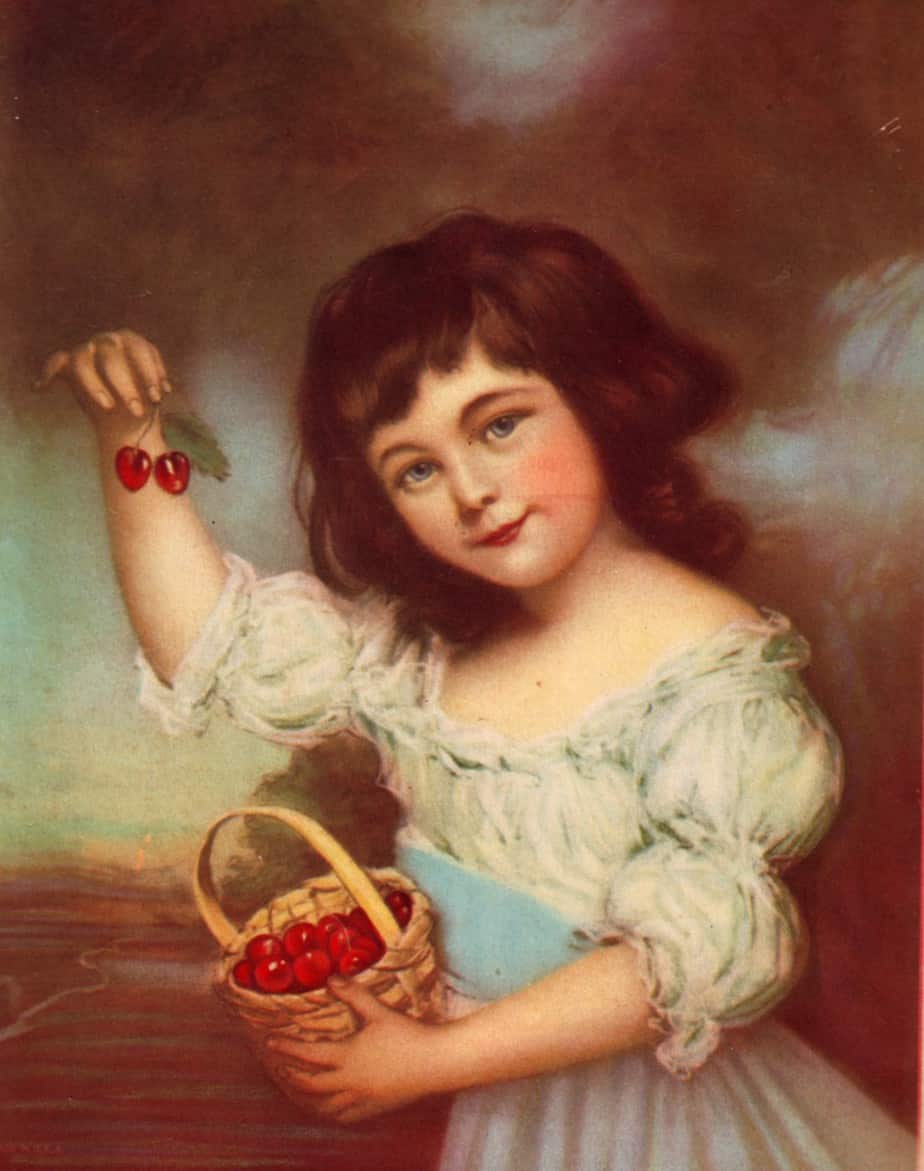
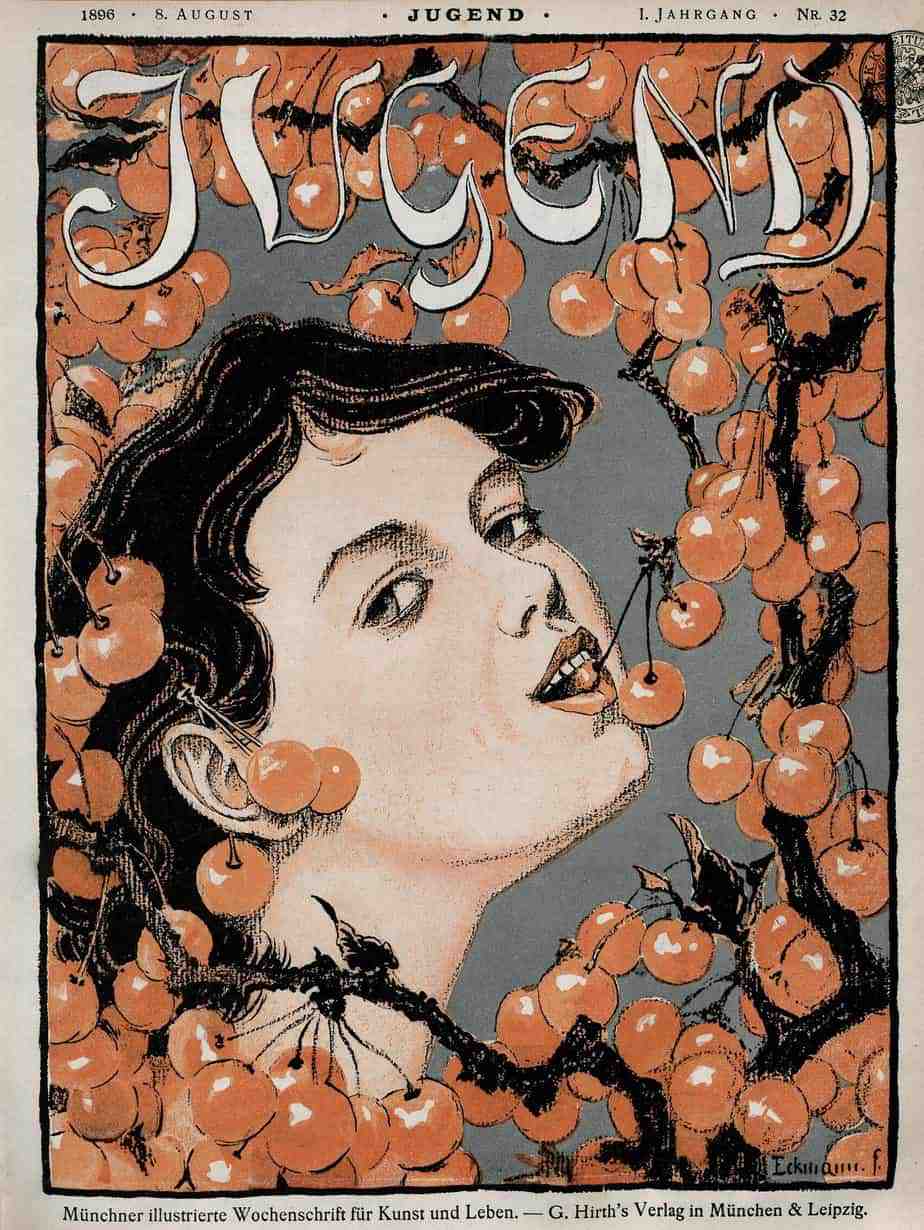
‘Fruit itself is innately sexual—after all, it’s defined as the enlarged ovaries of flowering plants’, writes Amanda Arnold at Vice. These plums were divided much earlier in Mahy’s novel: sour and sweet. Everyone has to eat the sour ones along with the sweet. This feels like yet another mental division, along with the personalities of the Tricksters, to describe Harry’s conflicting feelings around sex. She can’t see a way to enjoy excitement without attendant danger.
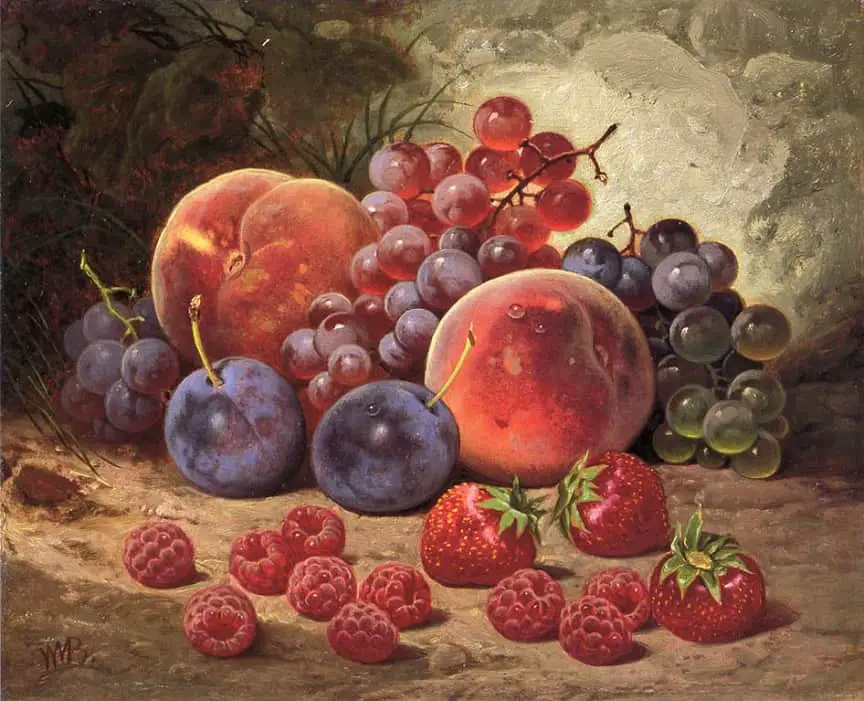
CHAPTER SIXTEEN: BLACKMAIL
Serena is playing with the cat as Harry is playing with her family members as fictional characters, in a mise en abyme sort of way.
Christobel accuses Emma of first taking her clothes, next muscling in on her family and now trying to take Robert. It is unclear whether this conversation happens in the veridical world of the story, or whether it happens inside Harry’s own head. Either way, Harry is noticing that Emma is an outsider who has come into the family under less than ideal circumstances.
Naomi confronts Ovid about the wallpaper situation.
This chapter seems to comprise a whole lot of fantasy chatter that doesn’t seem at first glance to do anything by way of advancing the plot, so I’m guessing it’s entirely foreshadowing, metaphorical and symbolic.
CHAPTER SEVENTEEN: HARRY AND OVID
The voice of this entire chapter feels darkly carnivalesque, as if the reader has entered one of those fairground stalls with flashing lights and voices coming at you out of nowhere.
Harry is channelling her more sexually confident older sister, lying naked on her bed, then dressing for the first time (outside Christobel’s robe) in feminine clothing. (The trope that femme people dress more femme to fully claim their own sexuality needs to die.)
Ovid joins Harry in her attic bedspace and seems to be a bit of a trans character as he holds a dress up against himself. Since Harry is also playing with dress to find her identity, Ovid is very clearly a part of Harry.
While Harry worries that Ovid is going to do something unwelcome to her, Ovid tells Harry that he likes Christobel more than he wants to. He calls Harry his sister, and also claims Felix for himself.
Meanwhile, downstairs, the cat brings in a mouse and startles the whole household, interrupting Harry’s reverie upstairs. Harry is the mouse, Ovid is the cat. Ovid hugs himself and disappears. Harry wishes to go down to the beach, where no one (or possibly only Felix) might find her.
CHAPTER EIGHTEEN: WINNERS AND LOSERS
This chapter feels mostly realism. Harry’s parents are arguing, the women are setting up the house for Christmas, Christobel wants nothing to do with that and goes down to the beach. I deduce that Harry only imagines Christobel’s conversation with Anthony on the beach because Harry is not there to observe. Talk of the Tricksters comes into their conversation. Serena comes back to the house and says there’s love going on everywhere, which may be the snippet which inspires Harry’s imaginings.
In the conversation, it seems Christobel is only interested in being the centre of attention, is inclined to be jealous of Emma and the attention she gets for her baby, and is in general a narcissist.
I have no idea which parts of this story ‘really’ happen.
Anyway, Serena announces to the others that Harry is in love with Felix. Harry’s mother wonders how Harry can tell the Tricksters apart.
CHAPTER NINETEEN: BREAKING FREE
Harry’s fancy dress would have to be her true, astonishing self
The idea that there is a true self is a WEIRD (Western Educated Industriaised Rich Democratic) notion. Non Western cultures don’t tend to think in terms of a ‘fake’ self and a ‘true’ self, but Western stories are built upon the idea that in order to be happy, you must find out who you ‘really’ are.
Emma asks if Harry likes Felix. Harry asks if Emma likes Robert. Both young women are thinking of Christobel.
On the beach, everyone’s in a dress-up costume to celebrate Christmas. Other families are around now, not just Harry’s family.
Down on the beach, Christobel is wearing make up and an alluring costume which suggests fakery and deceit. This, too, is a very old trope. I believe we are meant to distrust Christobel because of this feminine artifice, whereas we are meant to side with Harry because of her lack of it. (Her 1980s androgyny.)
Harry observes that Christobel has become Ovia’s ‘marionette’, which is how it can feel when a sister or friend has fallen in love — as if their new love interest is pulling the strings.
The Tricksters are really creepy and all blend into each other. At the end of the chapter, Mahy uses a vortex metaphor:
“Run!” he suggested. “Shall we run like the wind?” The wind obediently whirled around him as if he were its very vortex. “Run with me.”
The Tricksters
Harry is being swept into something and she’s excited and afraid of it.
CHAPTER TWENTY: THE GREAT GRAND-CHILD OF THE GODDESS OF WISDOM
The family walk back to the house from the beach after a day of Christmas eve festivities (though I mistakenly think it’s Christmas Day until I get to the following chapter). Just when I start to wonder who’s doing work behind the scenes, looking after all these people, Mahy inserts a mother’s point of view via Naomi, including a spiel about how it’s easier to just do the work herself than to ask the older daughters to help. (There’s no griping about lack of help from the men.)
Just when I think this chapter is going to be Trickster-free, Naomi mentions how Harry is spending a lot of time with Felix and that’s why she can’t be expected to help clean up. Where is Harry in all this? This lack of knowing what’s real and what’s inside Harry’s head is really quite something. There is absolutely no delineation. What surprises me as reader: If Harry’s going to imagine a lover to occupy herself, why would she imagine boring kitchen scenes in which her mother complains she’s not helping?
Mahy is more accurately than other books depicting how fantasy works in reality, I think. Rich fantasy worlds are of course punctuated by the mundane and even the unpleasant, because once the story gets going, the imaginator is not in full control of their inner world. My read is this: Harry is indeed helping out in the kitchen, but imagines herself elsewhere. (On the beach with Felix.) Drying dishes is boring.
Anthony gifts the family a book of stories.
The big reveal, told via the story of an old woman with dementia, is that Teddy was killed by his own father in an act of self-defence.
Anthony says that Ovid is a showman, ‘and when he’s got nothing to show, he forces something to show itself.’
I happen to already know what the main reveal is (it’s an old book) and here we go with the build-up.
At the end of the chapter, Christobel has got her hands on Harry’s fiction and is reading erotic sections of it aloud to the rest of the family, laughing.
CHAPTER TWENTY-ONE: THE TRUE CARNIVAL MAGICIAN
The chapter opens with Felix and Harry in the crest of the hill behind Carnival’s Hide, in an imaginary post-coital scene. Generally, characters have epiphanies in elevated places or — in this case — a first partnered (?) sexual experience. They walk back to the house, and the Christmas tree looks to Harry like something out of a horror movie. She’s feeling this sense of foreboding. She definitely knows something is wrong. Harry walks in on Christobel reading her novel in a mocking way to the others. Christobel pretends she didn’t know it was Harry’s.
This sends Harry over the edge. Now the reader learns that Harry has known about Jack being Tibby’s father for a while (all along?) and Christobel has it revealed for the first time. The first person Christobel blames is Emma (rather than her father). Harry blames the imaginary Tricksters for bringing this all to the fore.
The Carnivals leave, leaving ‘alterations in the family’ behind them.
CHAPTER TWENTY-TWO: WORDS AND DUST
The narrative camera moves away to encompass all characters equally before returning later to Harry’s point of view, as she goes down onto the beach and burns her book. First there’s a family discussion about how some of the family knew the secret of Tibby, others didn’t, and the parents were tossing up whether or not to tell Christobel the secret. Serena loved Harry’s book, and looks at her with renewed respect, but this does nothing to help Harry, who didn’t write it to impress her little sister.
Nobody is blaming the father, though I am personally having trouble moving past the fact that he’s got off scott free. Perhaps this is a sign of changed times? At the end of the chapter, Christobel and Harry make up, with Christo apologising for being mean about Harry’s book. Harry said she knew it was terrible anyway.
PART THREE — NEW YEAR
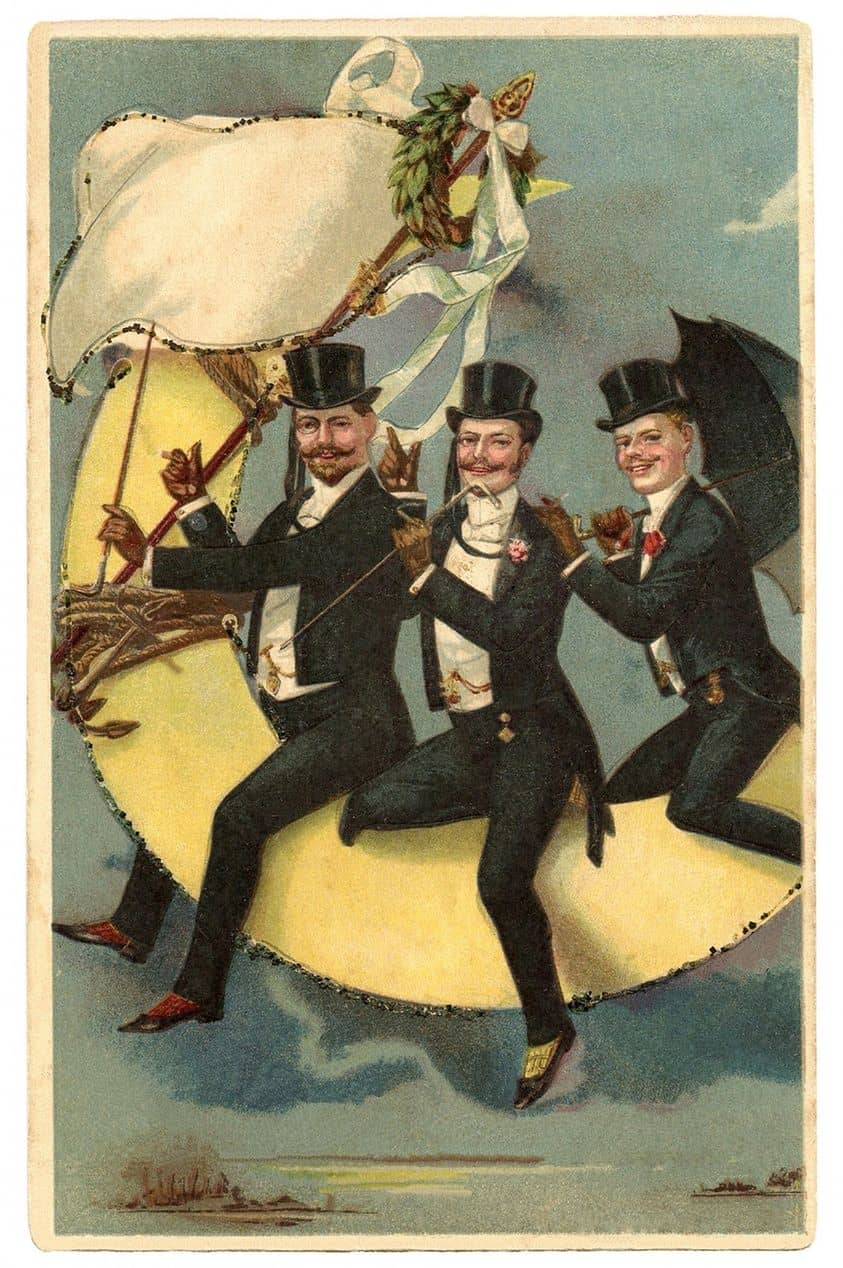
CHAPTER TWENTY-THREE: ONCE UPON A TIME
Christo’s most dramatic moments are omitted from the page (because Harry is down on the beach burning her book).
What elevates this story into the realm of feminist work is the fact that two warring sisters reunite at the end, and the younger sister encourages Harry to take up writing again. I was lamenting Harry burning her book, so this felt satisfying for me.
Reading other consumer reviews of this book, there isn’t much love for Christobel. She’s perceived as basically evil. Yet here I am thinking Christobel is behaving in a way I would expect upon learning that your father impregnated your best friend and no one told you.
The Tricksters makes it clear that all of us are many things and all of us will never be fully understood. It makes that lack of understanding sad, even tragic. and it makes it okay. It’s what happens to you and me and everyone. and it also makes it clear that, in the end, our best self, our Heart, is the self that counts. it’s the one that should win – and in this case, it does. The heart of the novel The Tricksters is a hopeful one, and full of love.
A Goodreads consumer review
Although for a time [Harry/Ariadne] rejects her own writing because she is so scared of this power, by the end of the chapter, entitled “Once upon a Time,” Harry decides to write again. As she stares at the blank page before her, she thinks, “The page was pure and certain, words were uncertain, but their uncertainty was what made them magical.” Harry understands that she can dialogically use words to create and to recreate: to create fiction, to recreate folktales so that they come out the way she wants them to, and to (re)create herself. Her sense of the power embedded in her ability to create represents the power inherent in recognizing her agency.
Waking Sleeping Beauty by Roberta Seelinger Trites
FOR FURTHER INVESTIGATION
Margaret Mahy’s young adult novels are frequently compared to those of Diana Wynne Jones, especially in regards to depiction of family dynamics , and the author’s use of fantasy to shed light on those dynamics.
